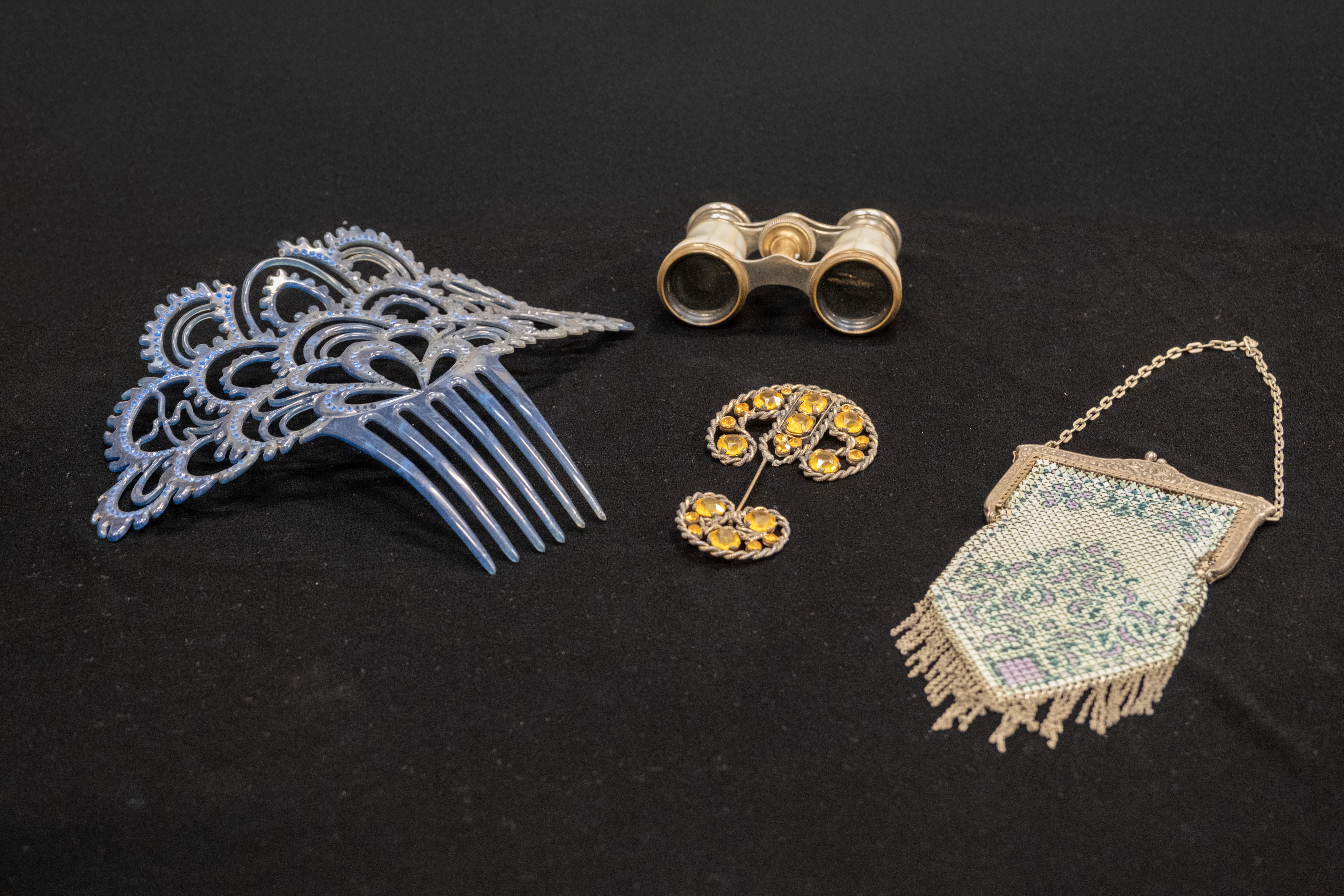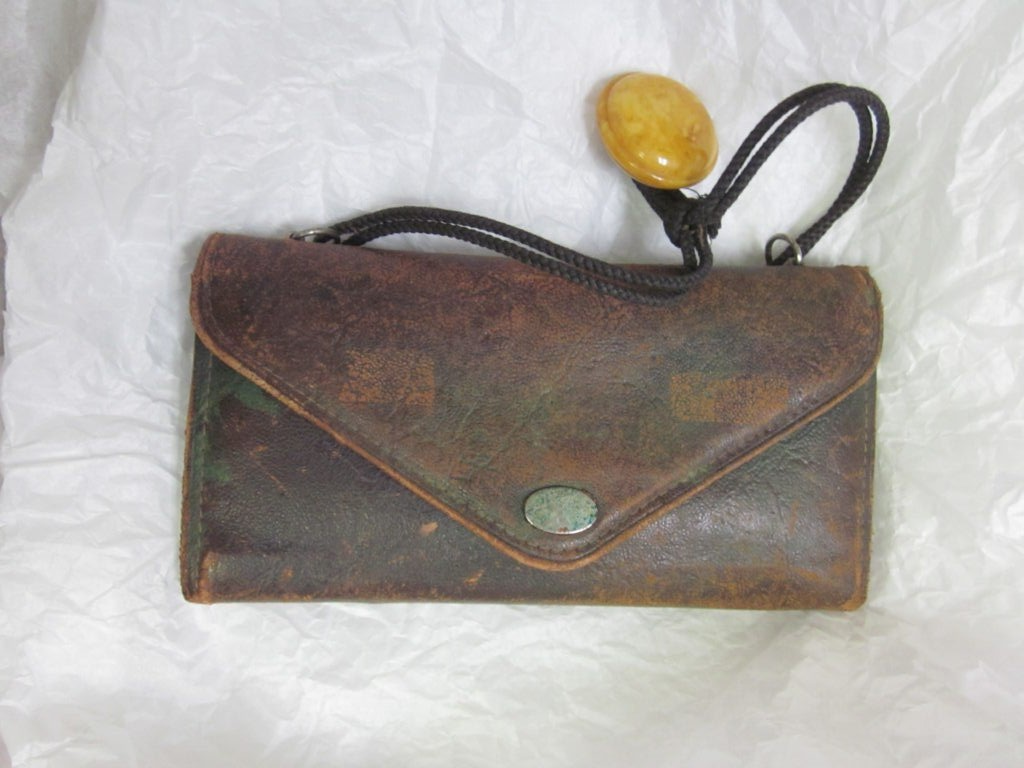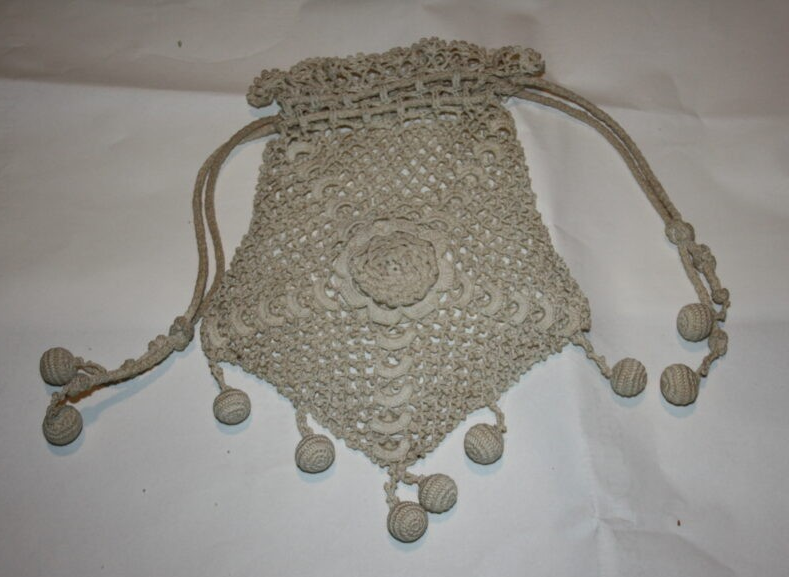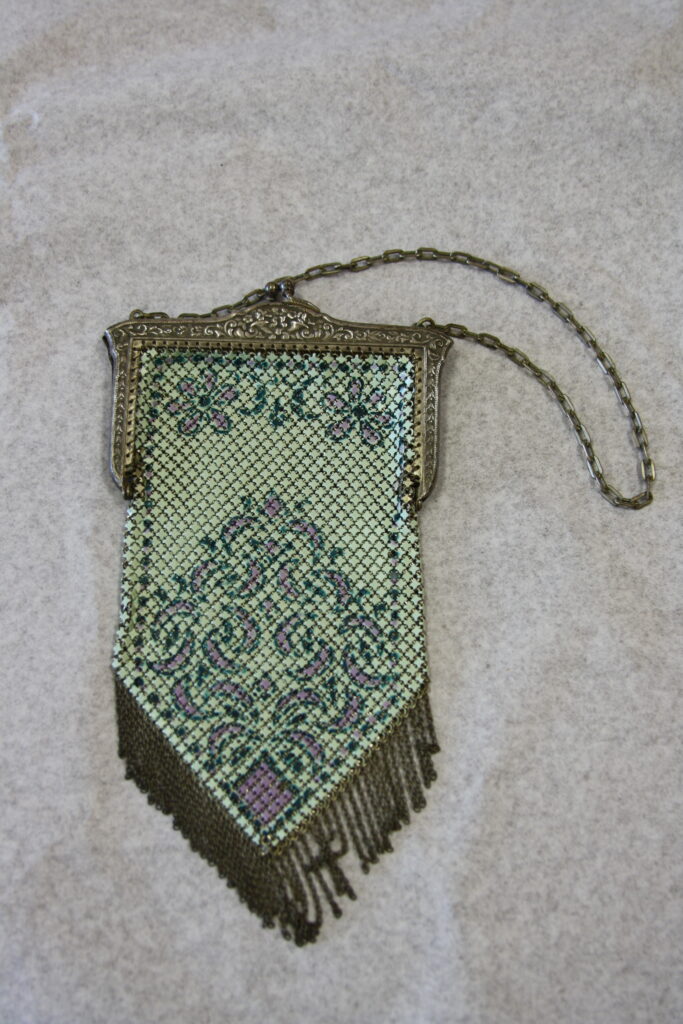
By Meghan E. Gattignolo
The Customs House Museum & Cultural Center’s mission is to collect, preserve, and interpret items from Clarksville and Montgomery County for future generations. Visitors can be sure just about every item saved in the museum’s collection or on display in the historical exhibits say something about the local area. Among other beautiful historical artifacts, the museum keeps quite a few antique accessories in the collection, including purses. Tastes in accessories change frequently from year to year and across socio-economic backgrounds, and a purse is a great snapshot look into life during any decade. Below are just a few examples of the handbags the Customs House Museum keeps safe in the collection.

Purse, 1920. Courtesy of the Customs House Museum & Cultural Center Collections.
Maybe not the most glamorous example from the Roaring ‘20s, this understated brown leather clutch was owned by Melissa Ann Holman. Melissa was born in 1897 in Robertson County, TN, but lived much of her life in rural Kentucky. She used this purse on her wedding day. Melissa married Karle Wilson Glenn in Trigg County, Kentucky, over a century ago on November 2, 1920.
While the 1920s is remembered as a time of glam and excess, it was also a time when many women were rethinking old customs. The 19th amendment passed in August 1920, and some women began to show a preference for informal weddings and courthouse elopements. This simple leather purse would have fit right into a more sensible ceremony. The beautiful yellow knob attached to the handle must have been a personal touch with special meaning.
The couple had two children together, Charles and Carolyn, and remained married until Karle’s death in 1963. Melissa passed away in 1986 in Clarksville, and her daughter donated the purse to the new museum shortly thereafter.

Crocheted purse, date unknown. Courtesy of the Customs House Museum & Cultural Center Collections.
If you think crocheted accessories are a 21st-century trend, the Customs House Museum’s Collection tells a different story. This unique handmade bag was an early addition to the museum’s collection in 1984.
Textile handicrafts have changed with the centuries to fulfill specific needs, and crochet is certainly one that has changed a lot. An early form of crochet, European farmers found ‘shepherds knitting’ a quicker way to create baskets with a flat hook instead of with needles. The word crochet is from a French word that refers to the more familiar hook now used to create the interconnected loops, and was invented in the 1830s. Crochet patterns were first printed in Britain in the 1840s, and Irish women used the craft to create lace to sell and help them through the disastrous times they faced during the Great Potato Famine.
Brought over by immigrants in the mid-19th century, crochet enjoyed a renaissance in the US after WWII. The mindset of making and mending your own clothes during the war carried over to the more leisure-filled postwar decades. Do-it-yourself and hobby crafts exploded in popularity, and the almighty granny square became a fashion icon during the boho-chic 1960s and ‘70s.
Crochet is unique from many other textiles in that it can’t be reproduced by machine, so this bag was no doubt crafted with joy by someone’s hand.

Mesh Handbag, circa 1920s. Courtesy of the Customs House Museum & Cultural Center Collections.
This bright mesh purse can be viewed on exhibit right now as part of the exhibition Holiday Glitz: From the Museum Collection.
Mesh and enamel purses like this were popular as an evening-wear accessory in the 1920s. Sahatiel Mandalian, an immigrant from Turkey and inventor who arrived in the US in 1898, was responsible for the design of handbags just like this one. While he patented many designs in the first half of the twentieth century, his “mail fabric” purses decorated with enamel are probably the most recognizable. The bags are sought after today for their bright colors and interesting patterns that are resistant to the test of time.
The owner of this bag lived through an exciting moment in time, and probably looked fabulous sporting this handbag during a night out, maybe to be seen at one of the glimmering theaters on Franklin Street.
Come out to the Customs House Museum to see the 1920s mesh handbag, as well as other glamorous accessories in the exhibition Holiday Glitz: From the Museum Collection in the Lobby from now until January 2nd. The museum is free to visit during Noel Night, on Thursday, December 5th from 5pm to 8pm. Enjoy the exhibits, as well as live instrumental music and other holiday charms. This event coincides with Downtown Clarksville’s monthly First Thursday Art Walk.
Resources
https://ancestors.familysearch.org/en/L2RP-FQB/melissa-ann-holman-1897-1986
https://www.iwm.org.uk/history/10-top-tips-for-winning-at-make-do-and-mend
https://www.crochet.org/page/CrochetHistory
https://www.sciencemuseum.org.uk/objects-and-stories/everyday-wonders/brief-history-diy

Meghan E. Gattignolo is a freelance writer and longtime Clarksville, TN resident. She loves to obsess about historical subjects and annoy her family daily with unsolicited random facts. Meghan holds a History B.A. from Austin Peay State University and lives in town with her husband and two children.